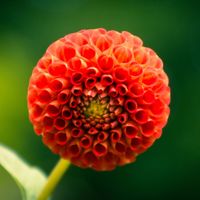Causes Of Problems With Eucalyptus Trees


Problems with eucalyptus trees are a fairly recent occurrence. Imported to the United States around 1860, the trees are native to Australia and up until 1990 were relatively pest and disease free. Today, people are seeing more problems with their eucalyptus bushes. Disease and pests are causing everything from leaf drop to eucalyptus trees splitting and dying.
Common Problems with Eucalyptus Trees
Most eucalyptus tree problems occur when the tree is stressed. This can be the result of disease or insects.
Diseases of Eucalyptus
Fungi, in particular, find an easy foothold in trees already damaged by age or insects. There are several fungi that can cause eucalyptus tree diseases. The most common are presented here.
Canker, caused by a type of fungus, begins by infecting the bark and proceeds to the interior of the tree. Leaves turn yellow and drop, and it is common to see eucalyptus trees dropping their branches as the disease takes hold. When canker attacks the trunk, the result will eventually be the eucalyptus trees splitting along their trunks or, if the canker girdles the trunk, strangling the eucalyptus tree. Problems with canker are also found in eucalyptus bushes. Disease moves quickly from branch to branch until the bush can no longer nourish itself.
Problems with another fungus, Phytophthora, are also becoming more common. Known as root, collar, foot, or crown rot, the disease shows itself first through discolored leaves and red-brown or dark brown wood directly beneath the bark.
Heart or trunk rot is a fungus that destroys the tree from the inside out. By the time the eucalyptus tree's drooping branches are discovered, the tree is already dying. There is little to be done for eucalyptus tree diseases these fungi cause. Preventing the spread of disease should be a priority. Burn all damaged wood immediately and disinfect any equipment used.
Eucalyptus Tree Pests
Insect pests may attack trees and eucalyptus bushes. Disease or weakness of any kind are open invitations for pests to invade. The red gum lurp psyllid are recognized by the little white houses (lurps) they secrete over themselves for protection. They also secrete a sticky honeydew that often becomes so thick it drips from the branches.
Sign up for the Gardening Know How newsletter today and receive a free copy of our e-book "How to Grow Delicious Tomatoes".
A large infestation can cause enough stress to cause leaf fall and attract the eucalyptus long-horned borer. Female borers lay their eggs on stressed trees and the resulting larvae burrow to the cambium layer. These larval galleries can girdle a tree, disrupting water flow from the roots and killing the tree within weeks. As with fungi, there is little to be done to combat these eucalyptus tree problems except to remove and destroy damaged wood.
Keeping your trees healthy is the best way to confront problems with eucalyptus trees and eucalyptus bushes. Disease and pests are usually opportunistic and invade where stress is present. Prune heavily and destroy all wood at the first sign of infection, and hope for the best.

Jackie Rhoades began writing for Gardening Know How in 2010.